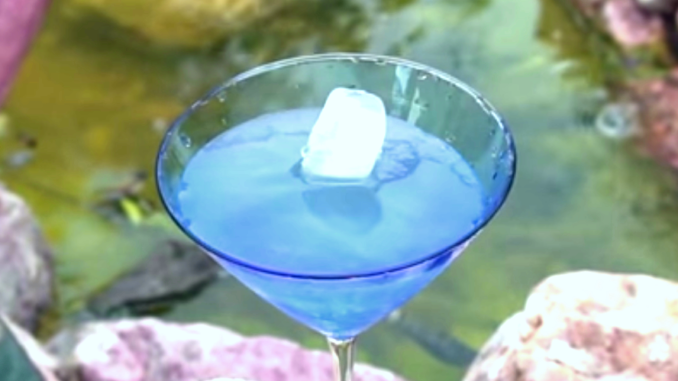
Everything about the natural world is pretty cool, including everyday occurrences such as water changing from a liquid to a solid. It may seem mundane, but the process is actually pretty interesting and you never know when an understanding of the world around you is going to come in handy, or at least entertaining.
As you know, ordinary water freezes at 32°F (0°C). By ordinary, we mean water from a faucet, a pond, or a puddle, for example. In addition to H2O, ordinary water has many impurities in it such as minerals, microbes, or just minute specks of dust. These impurities are critical to how ice commonly forms.
Let’s say we put a bottle of tap water into the freezer. As the water temperature reaches the freezing point, all the molecules (two hydrogen, one oxygen in each H2O molecule) line up with one another and form an organized structure called a crystal. (An ice cube is a crystal). The important point here is the water molecules all crystallize simultaneously.
Why? Turns out that the impurities in the water provide an easy starting point for crystallization to occur. Since there are many impurities in ordinary water, there are many starting points for crystallization to begin uniformly, all at once, everywhere in the bottle. Each impurity provides a nucleus for water molecules to form a crystal around. This is called heterogeneous nucleation.
What if there are no impurities in the water? Let’s take a bottle of water that has been distilled to remove all the impurities, and pop it in the freezer. The water temperature reaches 32°F (0°C) and, suprise! The water does not freeze!
Why? Because without impurities to give the H2O molecules a starting point, crystallization is harder to initiate. The temperature of the purified water drops lower and lower until it finally freezes at -43.6°F (-42°C). At this point it is called ‘supercooled’, the point at which pure water can form a crystal without the help of impurities.
If we take the bottle of water out of the freezer just before it freezes, we can watch homogeneous nucleation occur. You can do this at home with a bottle of store-bought purified drinking water. Carefully take the bottle out of the freezer and slam it against a convenient hard surface. The strike usually causes air bubbles to form in the water near the bottle cap, which is enough of a starting point for nucleation to begin. In other words the air bubbles are like impurities that provide a nucleus, around which crystallization can occur.
Once crystallization starts around a nucleus, a chain reaction begins and H2O molecule after molecule joins the crystal until the entire bottle is 100% frozen ice.
“Instant Ice – Waterbending In Real Life!” (2:52):
The next time you entertain at home, this little party trick could amaze your friends, but be sure to practice first and watch the tips video below. You need to know exactly how long it takes for your freezer to supercool purified water. (All freezers are not created equal). After you demonstrate your skill and mastery with this phenomenon, challenge your guests to try it. (Mischievous fun: provide them with a bottle that’s not cold enough to work).
“Instant Ice – Tips, Tricks, and Things to Watch Out For!” (5:02):
Question of the Night: Italian ice or slurpee or ??? Favorite flavor?
